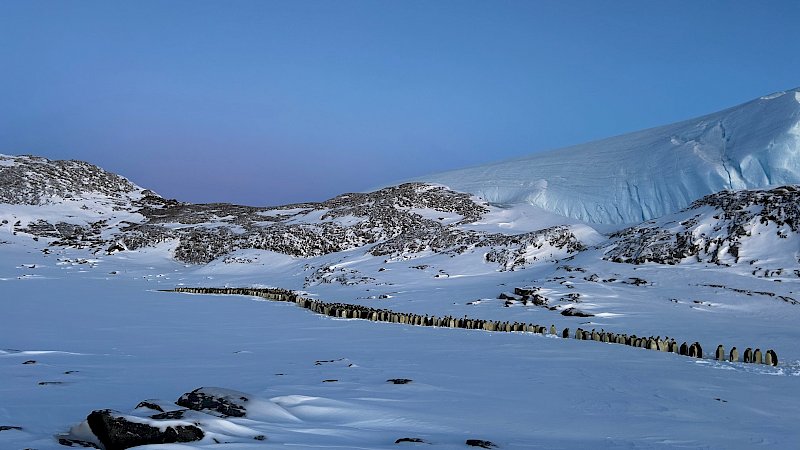A lucky handful of Mawson expeditioners visited the Taylor Glacier emperor penguin colony in July, to collect photos for the annual population census.
No more than 12 people get to visit the colony each year, due to its 'Antarctic Specially Protected Area' (ASPA) status.
Population counts have been ongoing since 1957, and averaged about 2500 birds between 2002 and 2023.
This season, Mawson station's Senior Field Training Officer, Lee Warner, and five other expeditioners, made the 90 km journey across the sea ice, to Colbeck Hut.

Mr Warner said the party had to stop regularly to measure sea-ice thickness, which must be at least 60 cm thick for safe passage by Hägglunds.
"Every change in appearance of the ice is generally a reason to test and assess the sea ice," Mr Warner said.
"Sea-ice conditions and ice thickness are influenced by glaciers, islands, snow depth, rafted ice and hidden anomalies like kelp beds, tide cracks and open water leads.
"We measure ice quality and thickness every hundred metres, or every few kilometres, depending on whether there are anomalies or not."
Once at the hut a team of four made the three kilometre trip to a vantage point above the colony where a number of automated cameras have been installed.
The cameras take photos of the colony every day throughout the year to show when the penguins arrive and leave.
"Pathfinding through waist deep powder snow to find the cameras to download the imagery captured over the last six to eight months is very satisfying. It's a great team effort," Mr Warner said.
The team also took the all-important census photos - a series of 30 photos looking down and across the colony, which are stitched together into a panorama (see banner above). Scientists can then count the number of penguins.
Senior Comms Tech Officer, Danny Novkovski, said the census photos and automated camera images were processed back at Mawson station and uploaded to the Head Office server for seabird expert, Dr Barbara Wienecke, to access them and conduct the census work.
Dr Wienecke said Taylor Glacier is one of only two known sites where emperor penguins breed entirely on land, rather than land-fast sea ice (sea ice attached to land).
The long-term monitoring project aims to assess the response of the penguins to environmental change and human activities, and ensure ASPA management plans continue to safeguard the animals.






